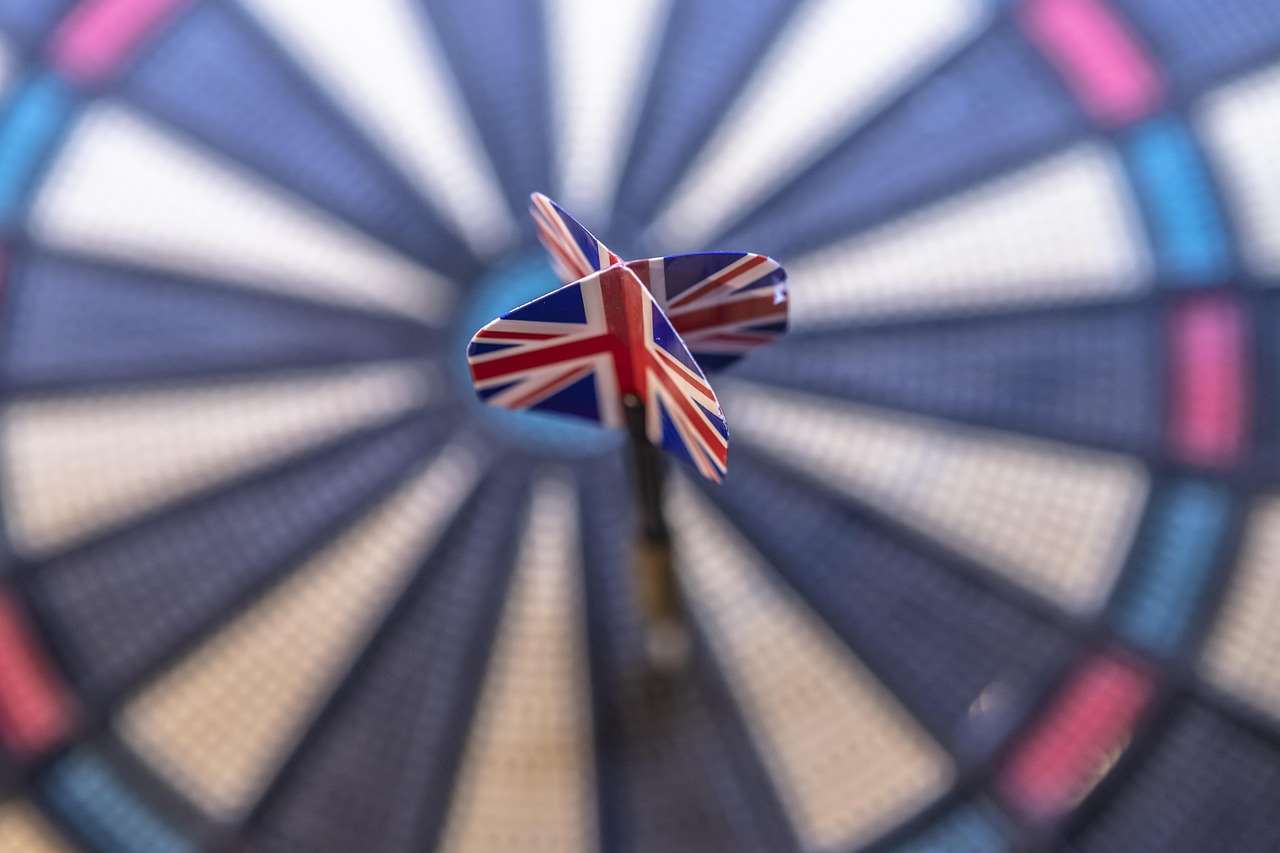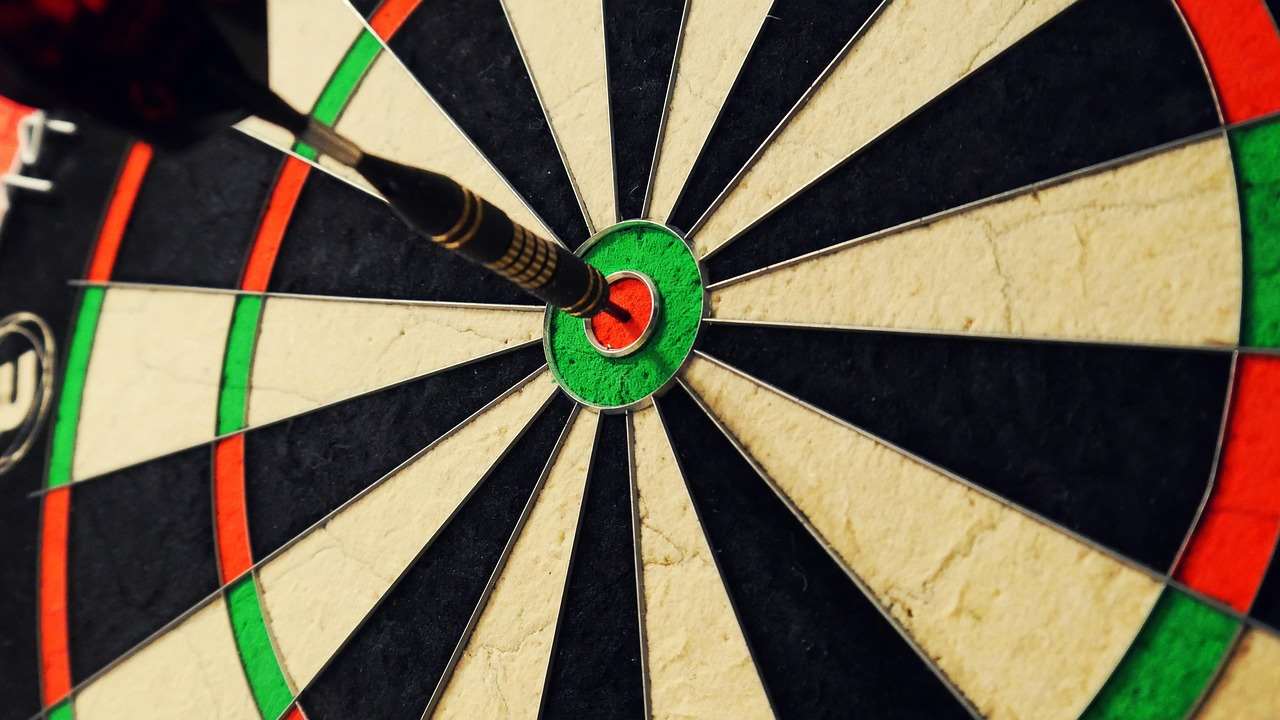Understanding the darts match score is crucial for both players and spectators. This article will explain how a darts match score is calculated and tracked, covering various game formats and providing tips for accurate scorekeeping. We’ll also explore some common scoring mistakes and strategies for improving your game.
⚠️ Still Using Pen & Paper (or a Chalkboard)?! ⚠️
Step into the future! The Dart Counter App handles all the scoring, suggests checkouts, and tracks your stats automatically. It's easier than you think!
Try the Smart Dart Counter App FREE!Ready for an upgrade? Click above!
Let’s begin with the basics of calculating the darts match score. In most games, points are awarded for hitting various segments on the dartboard. The highest possible score from a single dart is 60 (triple 20), making the maximum score for a single turn 180 (three triple 20s). Different game formats, such as 301, 501, and cricket, have varying rules and scoring methods, all affecting the overall darts match score.
One popular method of keeping track of the darts match score is using a dedicated darts scorekeeper online, or a free app like Free dart score app which simplifies the process considerably. These tools eliminate the risk of manual errors and allow for efficient score tracking, even in complicated formats.
Understanding Different Darts Match Score Formats
The way a darts match score is determined heavily depends on the specific game format. The most popular formats, like 301 and 501, are “legs” games, where players start with a target score (301 or 501) and reduce it to zero. They must finish on a double or a bullseye. Cricket, on the other hand, focuses on closing out specific numbers, making it a unique approach to calculating a darts match score.

Let’s delve into the specifics of each:
301 and 501
In 301 and 501, the player begins with 301 or 501 points, respectively. Each turn, the darts match score is reduced by the number of points scored. The first player to reduce their score to exactly zero, finishing on a double or bullseye, wins the leg. The game usually consists of a set number of legs (e.g., best of five, best of seven), creating the overall darts match score.
Cricket
Cricket is a different beast altogether when it comes to determining the darts match score. Here, players aim to “close” numbers (typically 15-20 and the bullseye) by hitting them three times each. Once a number is “closed”, further hits on that number score points for the player. The first player to close all their numbers and then have a higher overall darts match score than their opponent wins.
Keeping Track of the Darts Match Score
Accurate scorekeeping is vital for a fair and enjoyable game. While some players prefer traditional methods like pen and paper, digital scorekeeping is becoming increasingly prevalent. Using a darts scorekeeper online or a dedicated mobile app offers several advantages: it reduces the chance of errors, speeds up the game, and allows for easy review of the darts match score throughout the match. Consider the ease of use and available features when selecting a method.

Regardless of your chosen method, it’s crucial to ensure both players agree on the darts match score at the end of each turn. Any discrepancies should be resolved immediately to prevent arguments later. This will help ensure the smooth running of the match.
Common Mistakes in Darts Match Scorekeeping
Even experienced players can make mistakes when keeping track of the darts match score. Common errors include:
- Incorrectly subtracting scores
- Forgetting to finish on a double (in 301/501)
- Miscounting the number of hits for closing numbers (in Cricket)
- Not accounting for busting (going below zero) in 301/501
To avoid these errors, it’s always good practice to double-check your calculations, especially under pressure. Using a digital darts scorekeeper online can significantly mitigate these risks.
Strategies for Improving Your Darts Match Score
Beyond accurate scorekeeping, improving your overall darts match score requires dedicated practice and strategic thinking. Focusing on consistent throws, aiming for higher-scoring areas, and practicing your finishes will dramatically improve your game. Mastering your darts best stance and considering aspects like your darts wax grip can help you achieve greater accuracy.
Analyzing your previous games can identify weaknesses. You might discover you struggle with particular numbers or your finishing game needs work. For example, you might need to practice specific double shots or refine your aiming techniques. You can also explore tools like the target darts swiss point tool to enhance your precision.

Advanced Darts Match Score Scenarios
Beyond the basic game formats, some leagues and competitions utilize more complex scoring systems. These often involve handicaps, bonus points, or different rules around finishing. Understanding these variations is essential for those who play in such leagues. Keeping track of these nuances in the darts match score will require a higher level of concentration and potentially specialized scorekeeping methods.
For example, some games might incorporate a ‘shot-out’ if players reach a certain score. This would require additional calculations and considerations when determining the final darts match score.
The Psychology of the Darts Match Score
The darts match score itself can significantly impact a player’s mental game. A significant lead can boost confidence, while a close score can increase pressure. Understanding and managing this psychological aspect is as crucial as the technical skills. Mental strategies like visualization and positive self-talk can significantly benefit your performance.
The pressure associated with hitting a final double to win a leg, especially in a close game, is a testament to the mental game’s importance in darts. This can heavily affect the players’ performance and ultimately the darts match score.

Darts Match Score and Technology
Technology plays an increasingly significant role in modern darts. Many professional tournaments utilize electronic dartboards and automated scoring systems, eliminating the need for manual scorekeeping. These systems provide real-time updates of the darts match score, enhancing the viewing experience for both players and spectators. The integration of such technology contributes to the professionalization and wider appeal of darts.
Furthermore, smartphone apps and websites offer a range of tools for tracking and analyzing darts performance, including detailed statistics and personalized feedback. These technological advancements are continuously shaping the way we play, watch, and learn about darts.
Conclusion: Mastering the Darts Match Score
Understanding the darts match score is fundamental to enjoying and excelling in the game of darts. From the basic 301 and 501 formats to the intricacies of cricket, accurately tracking and managing the darts match score is crucial for both players and spectators. This article highlighted different game formats, effective scorekeeping techniques, and the psychological aspects involved.
By mastering the basics of scorekeeping and utilizing digital aids like a darts scorekeeper online or mobile apps, you can enhance your gaming experience and focus on improving your overall performance. Don’t forget to practice regularly and refine your strategies to consistently improve your darts match score! Remember to check out our other guides such as nine-darter, beter leren darten, when is the darts championship 2025 and dart shaft 3d print to further enhance your knowledge about darts.

Hi, I’m Dieter, and I created Dartcounter (Dartcounterapp.com). My motivation wasn’t being a darts expert – quite the opposite! When I first started playing, I loved the game but found keeping accurate scores and tracking stats difficult and distracting.
I figured I couldn’t be the only one struggling with this. So, I decided to build a solution: an easy-to-use application that everyone, no matter their experience level, could use to manage scoring effortlessly.
My goal for Dartcounter was simple: let the app handle the numbers – the scoring, the averages, the stats, even checkout suggestions – so players could focus purely on their throw and enjoying the game. It began as a way to solve my own beginner’s problem, and I’m thrilled it has grown into a helpful tool for the wider darts community.